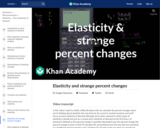
Why we calculate percent changes in a strange way when calculating elasticities. Created by Sal Khan.
- Subject:
- Economics
- Social Science
- Material Type:
- Lesson
- Provider:
- Khan Academy
- Provider Set:
- Khan Academy
- Author:
- Sal Khan
- Date Added:
- 07/27/2021

Why we calculate percent changes in a strange way when calculating elasticities. Created by Sal Khan.
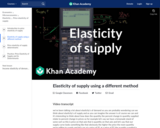
Thinking about elasticity of supply. Created by Sal Khan.

A brief video by Common Craft explaining the electoral college.
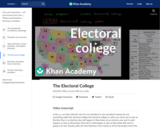
How we elect our President in the United States. Created by Sal Khan.

Go to National Archives and search for the electoral college, if the link does not work, this Text/HTML has a ton of information on the electoral college as well as historical results. You can also see the actual ballots sent in by each state as well as all electors chosen by each party within a state. LW
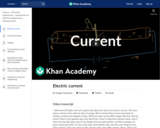
Current is the flow of charge. We measure current by counting the amount of charge passing through a boundary in one second. Created by Willy McAllister.
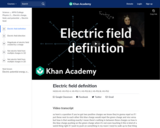
In this video David explains why physicists came up with the idea of the electric field, how it's useful, and explains how the electric field is defined. Created by David SantoPietro.
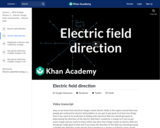
The direction of an electrical field at a point is the same as the direction of the electrical force acting on a positive test charge at that point. For example if you place a positive test charge in an electric field and the charge moves to the right you know the direction of the electric field in that region points to the right. Created by David SantoPietro.
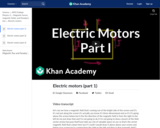
Sal shows that there will be a net torque on a loop of current in a wire. Sal shows that this net torque will cause the loop to rotate. Created by Sal Khan.
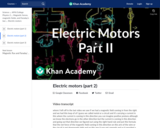
Sal shows that a commutator can be used in order to keep the loop of wire rotating in the magnetic field. Created by Sal Khan.
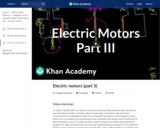
Sal finishes the explanation of how a commutator will allow a loop of wire to continue spinning in a magnetic field, thereby allowing it to work as an electric motor. Created by Sal Khan.

David explains electric potential (voltage). Created by David SantoPietro.
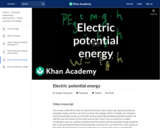
Introduction to electric potential energy. Created by Sal Khan.
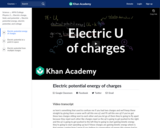
In this video David explains how to find the electric potential energy for a system of charges and solves an example problem to find the speed of moving charges. To see the calculus derivation of the formula watch this video. Created by David SantoPietro.
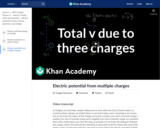
In this video David shows how to find the total electric potential at a point in space due to multiple charges. Created by David SantoPietro.
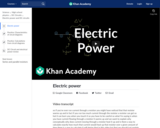
In this video David derives the formula to find the power used by a resistor. Created by David SantoPietro.

How a cell can use a molecule's electrochemical gradient to power secondary active transport.

Students learn about the scientific and mathematical concepts around electromagnetic light properties that enable the engineering of sunglasses for eye protection. They compare and contrast tinted and polarized lenses as well as learn about light intensity and how different mediums reduce the intensities of various electromagnetic radiation wavelengths. Through a PowerPoint® presentation, students learn about light polarization, transmission, reflection, intensity, attenuation, and Malus’ law. A demo using two slinky springs helps to illustrate wave disturbances and different-direction polarizations. As a mini-activity, students manipulate slide-mounted polarizing filters to alter light intensity and see how polarization by transmission works. Students use the Malus’ law equation to calculate the transmitted light intensity and learn about Brewster’s angle. Two math problem student handouts are provided. Students also brainstorm ideas on how sunglasses could be designed and improved, which prepares them for the associated hands-on design/build activity.
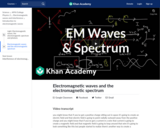
Introduction to electromagnetic waves and the electromagnetic spectrum.

So we know that all matter is made up of atoms, but what is an atom made out of? Chemists describe the structure of atoms using models. This section will cover the Bohr model, photoelectric effect, absorption and emission spectra, quantum numbers, and electron configurations.